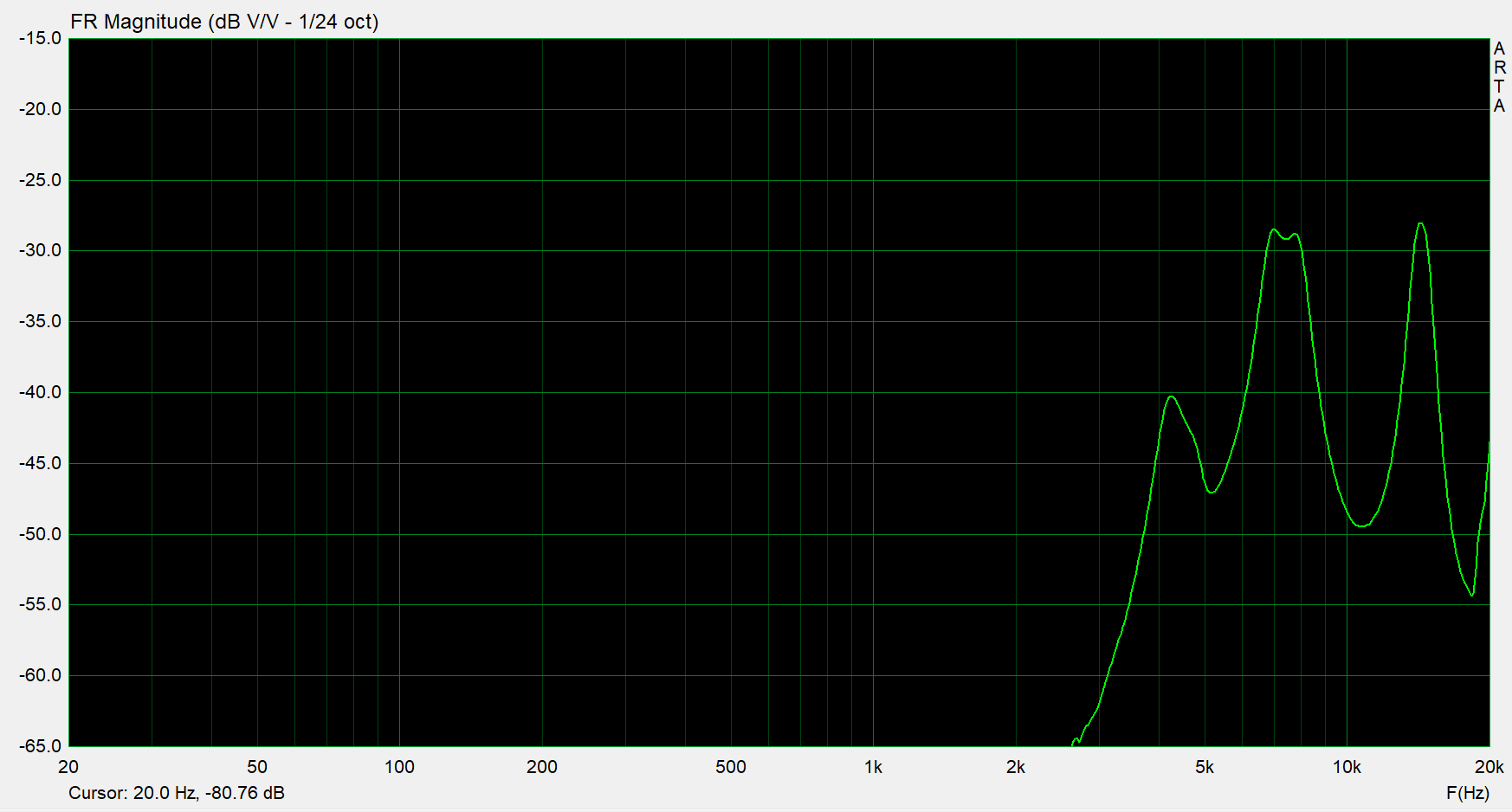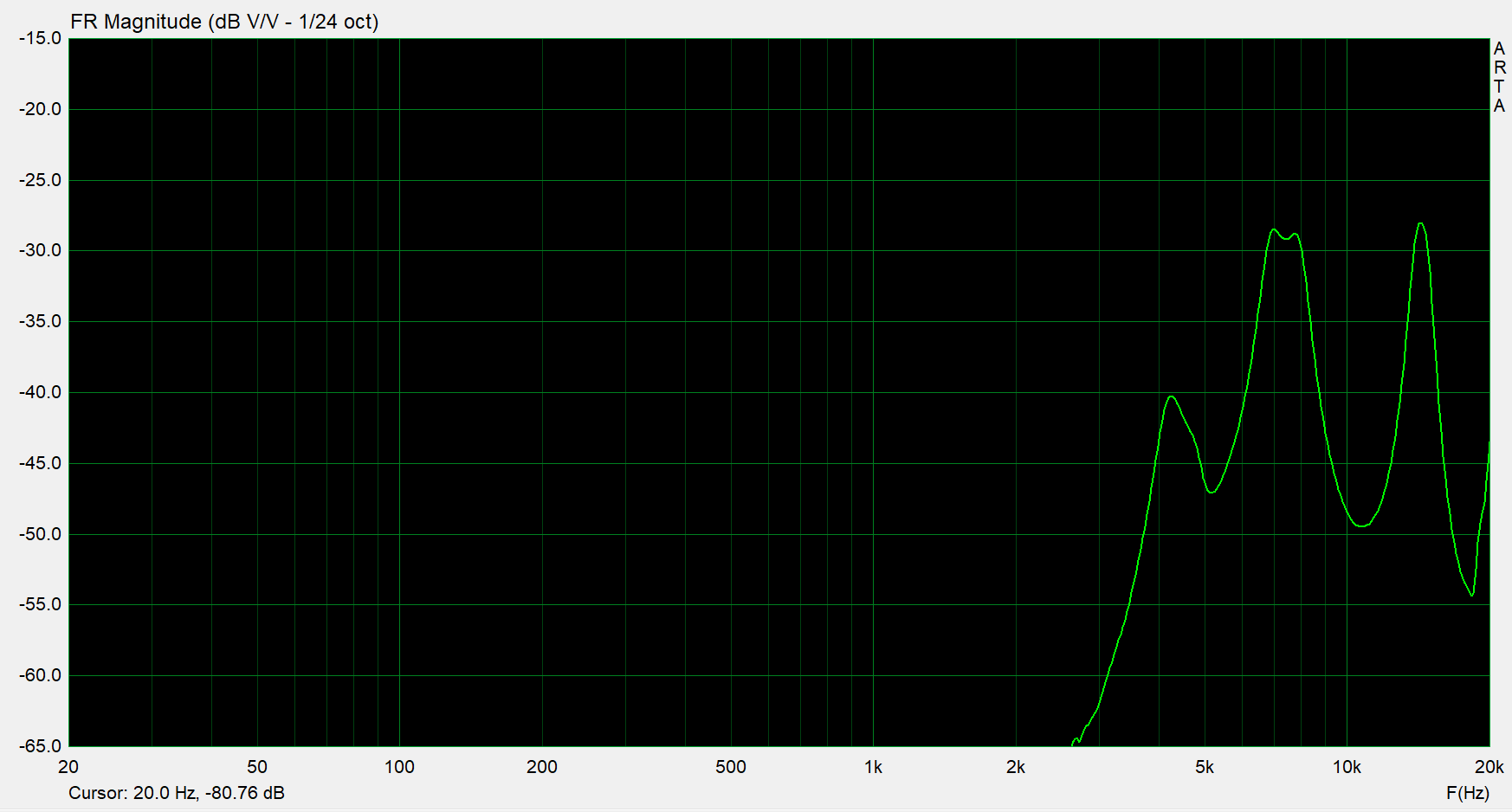dhruvmeena96
Headphoneus Supremus
What I will do is heavily damp CI with two yellow firstIt is workable, could use some help on the high end. The 0.2mm ID brass tube is almost impractically small, but clearly functions as a low pass filter. Maybe just use a short section of it as an orifice, and maintain more of the subbass volume. Lots of physical tweaking to do if I decide to finalize it. This was mostly just for proof of concept, and electrical practice.
The Raf 330hz high pass showed up as pretty much as expected. No cancelation issues either.
Edit: in theory, I could close the gap on low/mid range between the blue and yellow curves, by adjusting the CI tubing.

Last edited:
























